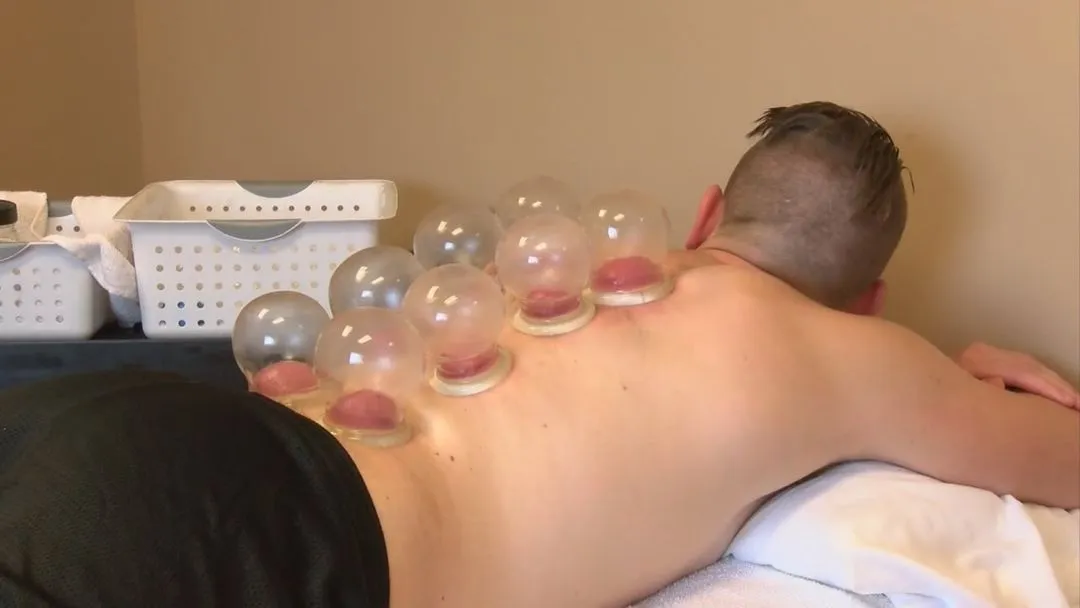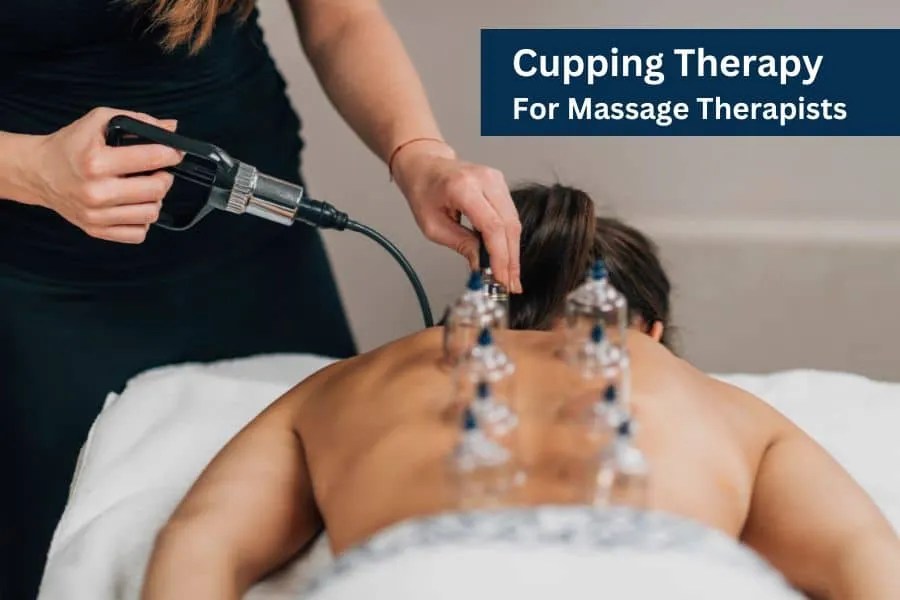
Are you curious about the ancient practice of cupping therapy and eager to experience its potential benefits? Look no further than Lansvale, NSW, where you can find a qualified and experienced cupping therapist to help you on your wellness journey. In this bustling suburb, you'll discover a range of clinics offering this traditional therapy, each with its unique approach and specialization. Whether you're seeking relief from chronic pain, respiratory conditions, or digestive issues, cupping therapy may offer a natural and holistic solution. But before you dive into this alternative treatment, it's essential to understand the process, potential risks, and how to find a reputable clinic that meets your needs. From the history and benefits of cupping therapy to the comparison with other treatments, this comprehensive guide will equip you with the knowledge and insights to make informed decisions about your health and well-being. So, if you're ready to explore the world of cupping therapy in Lansvale, get ready to embark on a journey of healing, relaxation, and rejuvenation.

Cupping therapy has a long history, with evidence suggesting it dates back to ancient Egyptian, Chinese, and Middle Eastern cultures. It involves placing cups on the skin to create suction and promote healing through increased blood flow. The practice has evolved and is now used in various forms across different cultures.
The benefits of cupping therapy are said to include pain relief, relaxation, improved circulation, and reduction of inflammation. Some also believe that it can help with respiratory issues such as bronchitis and asthma. While scientific research on the effectiveness of cupping therapy is limited, many people report positive experiences with the treatment.
There are several types of cupping therapy, including dry cupping (which uses suction cups), wet cupping (which involves making small incisions in the skin), and fire cupping (wherein a flame briefly heats the inside of the cup before being placed on the skin). Each type may have its own set of potential benefits and risks.
When searching for a qualified cupping therapist, it is essential to look for certifications and qualifications. A reputable therapist should have completed specific training in cupping therapy and obtained relevant certifications. Look for therapists who are members of professional organizations or associations related to alternative medicine, as this can indicate their commitment to high standards of practice.
Reviews and testimonials from previous clients can provide valuable insight into the quality of service offered by a cupping therapist. Take the time to read through reviews on platforms such as Google, Yelp, or social media pages to gauge the experiences of others. Positive reviews highlighting effective treatments and professionalism can be indicative of a trustworthy practitioner.
Consider the location and accessibility when choosing a cupping therapist. Ideally, you want to find a therapist located near you in Lansvale NSW to minimize travel time and inconvenience. Additionally, consider factors such as parking availability or public transportation options if needed. Prioritize finding a convenient location that fits your schedule.

The process of cupping therapy begins with a preparation and consultation session, where the therapist will discuss the patient's medical history, concerns, and goals for the treatment. This helps to ensure that the therapy is tailored to the individual's specific needs. During this time, any questions or apprehensions can be addressed as well.
Once the consultation is complete, the actual cupping process begins. The therapist will use either glass or silicone cups to create suction on specific areas of the body. This suction promotes blood flow and can help relieve muscle tension and pain. The cups are typically left in place for a few minutes before being removed.
Aftercare and follow-up are important aspects of cupping therapy. Patients may experience temporary skin discolouration from the suction, but this usually fades within a few days. It's recommended to drink plenty of water after a session to aid in toxin elimination from the body. Depending on individual needs, additional sessions may be scheduled for ongoing maintenance.
The average cost of cupping therapy in Lansvale NSW can vary depending on the practitioner, location, and specific treatment plan. On average, a single session of cupping therapy may range from $40 to $80. However, it's important to note that some practitioners offer package deals or discounts for multiple sessions.
When it comes to health insurance coverage for cupping therapy, it's essential to check with your insurance provider beforehand. While some insurance plans may cover alternative therapies such as cupping, others may not provide any coverage at all. It's recommended to contact your insurance company directly to inquire about their policies regarding cupping therapy.
In terms of payment options and plans, many cupping therapy practitioners in Lansvale NSW offer flexible payment arrangements. This may include accepting various forms of payment such as credit cards, cash, or electronic transfers. Additionally, some practitioners may offer instalment plans or sliding scale fees based on individual financial circumstances.
Cupping therapy is effective in managing pain, whether it's from muscle tension, arthritis, or other chronic conditions. The suction and negative pressure provided by cupping can help improve blood flow to the targeted area, promoting healing and reducing discomfort.
For individuals with respiratory conditions such as asthma or bronchitis, cupping therapy may offer relief. By targeting specific acupressure points on the back, cupping can help loosen chest congestion and improve overall lung function.
In terms of digestive health, cupping therapy has shown promise in alleviating symptoms of irritable bowel syndrome (IBS), indigestion, and other gastrointestinal issues. The stimulation provided by cupping can aid in digestion and reduce bloating or discomfort.
Common side effects of cupping therapy may include mild discomfort, skin irritation, and bruising at the site where the cups were applied. These effects are usually temporary and subside within a few days. Additionally, some individuals may experience dizziness or lightheadedness during or after the treatment.
Potential risks and complications associated with cupping therapy include burns from the heated cups, allergic reactions to oils or lotions used during the process, and infections if unsterilized equipment is used. In rare cases, there have been reports of skin pigmentation changes or scarring as a result of cupping therapy.
It's important for individuals considering cupping therapy to be aware of certain precautions and contraindications. People with certain medical conditions such as hemophilia or those taking blood-thinning medications should avoid cupping therapy due to the increased risk of bleeding. Pregnant women should also consult their healthcare provider before undergoing this treatment.
When comparing cupping therapy with acupuncture, it's important to note that both treatments aim to promote the body's natural healing process. Acupuncture involves inserting thin needles into specific points on the body to stimulate energy flow while cupping uses suction cups to create negative pressure and release tension. While both therapies have their unique mechanisms of action, they can be complementary and used together for a more holistic approach to health and wellness.
In contrast, massage therapy primarily focuses on manipulating soft tissues to relieve muscle tension, improve circulation, and promote relaxation. While cupping therapy also targets muscular pain and tension, it does so by creating suction at specific points rather than manually kneading or applying pressure. However, combining cupping with massage therapy can enhance the overall benefits by addressing different aspects of musculoskeletal health.
Ultimately, whether one chooses cupping therapy or another treatment option depends on individual preferences and health goals. Some individuals may find that cupping provides targeted relief for certain conditions or complements their existing wellness routine. Others may prefer acupuncture or massage therapy for their unique therapeutic effects. It's essential to consult with a qualified healthcare professional who can provide personalized recommendations based on your specific needs.
Cupping therapy works by creating a vacuum on the skin, which helps to increase blood flow and promote healing. The suction from the cups can also help to release muscle tension and reduce inflammation. This traditional Chinese therapy is believed to help with various conditions such as pain, stress, and fatigue.
For most people, cupping therapy is not painful. You may feel some pressure or discomfort as the cups are placed on your skin and the air is removed to create suction. Some bruising or marks on the skin after treatment is common but they are usually mild and temporary.
The number of sessions needed for cupping therapy varies depending on individual needs and the condition being treated. Some people may experience relief after just one session, while others may require multiple sessions for optimal results. It's best to consult with a qualified practitioner who can assess your specific situation and provide personalized recommendations.
When researching local clinics for cupping therapy, it is important to consider factors such as the clinic's reputation, the experience of the therapists, and customer reviews. Take the time to read through online testimonials and ask for referrals from friends or family members who have undergone cupping therapy in the area.
Scheduling a consultation with the clinic can provide an opportunity to meet the therapist and discuss your specific needs and concerns. During this meeting, you can inquire about their training, certifications, and experience in providing cupping therapy. It is essential to feel comfortable with the therapist and confident in their abilities before starting any treatment.
Meeting the cupping therapist in person allows you to assess their professionalism, communication style, and overall approach to patient care. Pay attention to how they address your questions and whether they take time to understand your medical history and current health status. A good rapport with your therapist is crucial for a positive treatment experience.
At Prime Chiro, we understand the importance of finding the best chiropractor near you in Lansvale NSW and nearby areas like Fairfield, Liverpool, and Cabramatta. Our team of experienced professionals is dedicated to providing top-quality chiropractic care and consultation services to individuals in need. Whether you're seeking relief from back pain, neck pain, headaches, or other musculoskeletal issues, we are here to help. Our goal is to improve your overall health and well-being through personalized treatment plans and compassionate care. Contact Prime Chiro today to schedule a consultation and take the first step towards a healthier, pain-free life.
Cupping therapy is an ancient alternative medicine practice that involves placing cups on the skin to create suction. This suction is believed to help with pain, inflammation, blood flow, and relaxation.
Cupping therapy works by creating a vacuum inside the cups, which draws the skin and underlying tissues upward. This suction can help to release tension, promote blood flow, and stimulate the body's natural healing processes.
Cupping therapy is believed to have several benefits, including pain relief, improved blood circulation, reduced inflammation, relaxation, and the release of toxins. It is commonly used to treat muscle pain, sports injuries, respiratory conditions, and stress-related issues.
Cupping therapy is generally considered safe when performed by a trained professional. However, it may cause temporary skin discolouration, bruising, or mild discomfort. It is important to consult with a qualified practitioner and discuss any pre-existing medical conditions before undergoing cupping therapy.
The duration of a cupping therapy session can vary depending on the individual's needs and the practitioner's approach. Typically, a session can last anywhere from 15 to 30 minutes. The number of sessions required for optimal results may also vary, depending on the condition being treated.
TL;DR: Cupping therapy is a traditional Chinese medicine practice that involves placing cups on the skin to create suction. It can be beneficial for pain management, respiratory conditions, and digestive health. When looking for cupping therapy in Lansvale NSW, be sure to find a qualified therapist, consider the cost and insurance coverage, and compare it with other treatment options. It's important to research local clinics, schedule a consultation, and meet the cupping therapist to ensure a safe and effective experience.